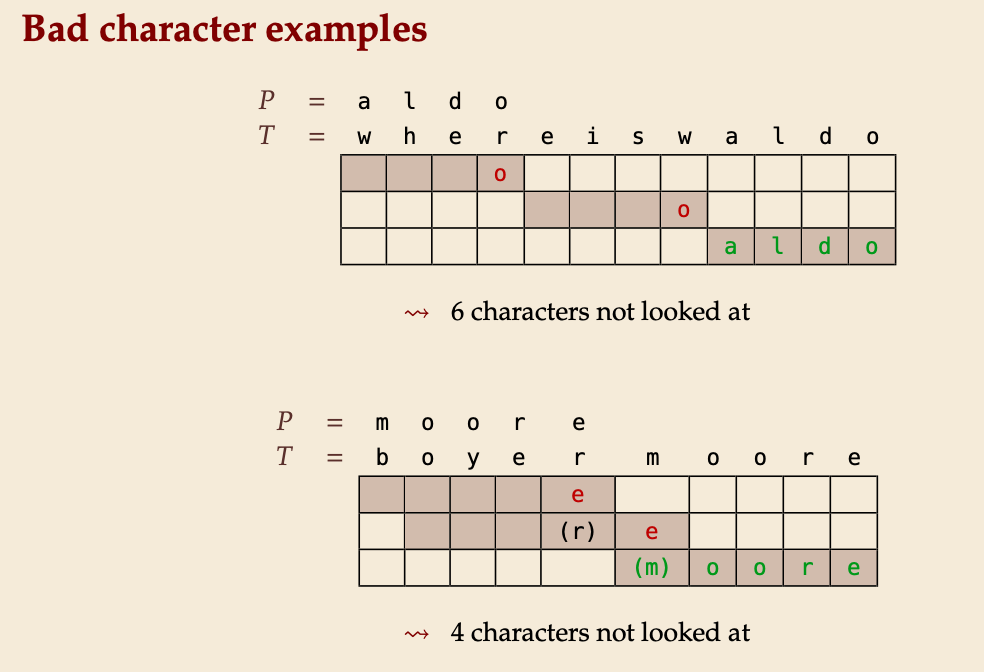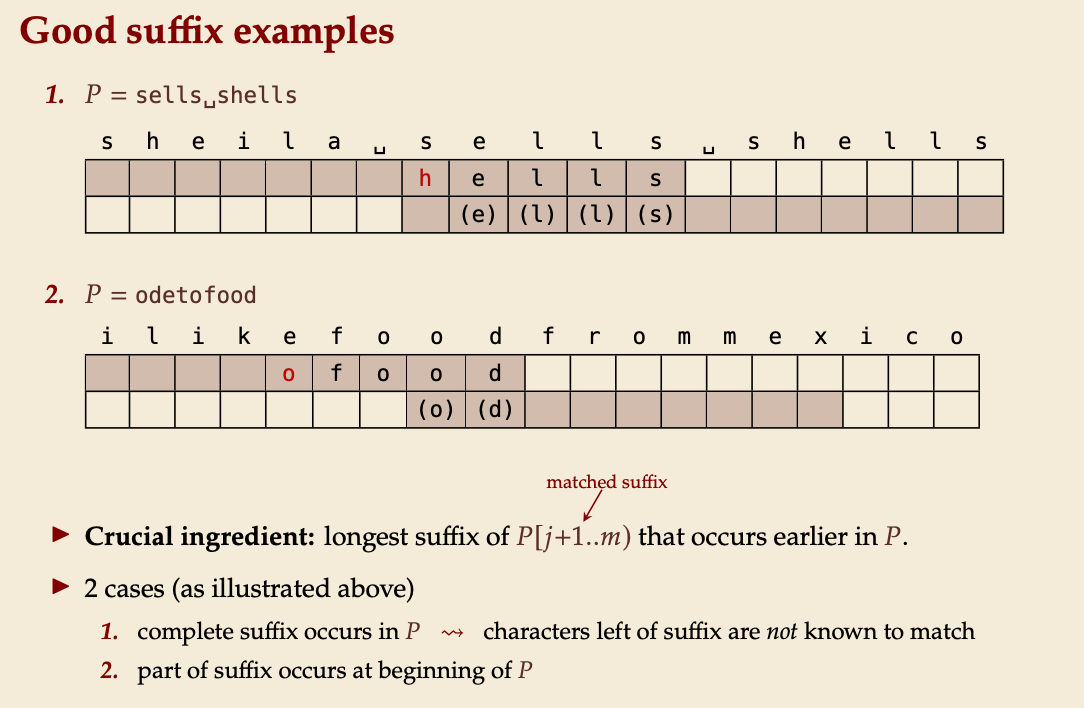String Matching – What’s behind Ctrl+F
When we do search for a string in a notepad file, browser, or database, pattern searching algorithms are used to show the search results. Boyer-Moore String Search is one such pattern searching algorithm, meaning it has large area of practical use.
String matching - Search for a string (pattern) in a large body of text
Input:
- T: The text being searched within, length is n
- P: The pattern being searched for, length is m, typically n >> m
Output:
- The first occurrence (match) of P in T
- or NO_MATCH if P does not occur in T
The string-searching problem is to find all occurrences of pattern(s) in a text string. The Aho-Corasick string searching algorithm simultaneously finds all occurrences of multiple patterns in one pass through the text. On the other hand, the Boyer-Moore algorithm is understood to be the fastest algorithm for a single pattern.
Brute Force
procedure bruteForceSM(T, P)
for i = 0...n-m-1 do
for j = 0...m-1 do
if (T[i+j] != P[j]) then break inner loop
if j == m then return i
return NO_MATCHCost measure: #character comparisons
- number of possible checks ≤ n * m
Worst possible input:
- P = aaab, T = aaaaaaaa
- Worst-case performance: (n - m + 1) * m
Boyer-Moore Algorithm
Let’s check from right to left (starting with the last character in the pattern). If we are lucky, we can eliminate several shifts in one shot.
New rules
- Bad character jumps: Upon mismatch at T[i] = c, if P does not contain c, shift P entirely past i. Otherwise, shift P to align the last occurrence of c in P with T[i].
- Good suffix jumps: Upon a mismatch, shift so that the already matched suffix of P aligns with a previous occurrence of that suffix (or part of it) in P.
- Shift forward is larger of two heuristics, and it is always positive.


The preprocessing for the good suffix heuristics is rather difficult to understand and to implement. Therefore, sometimes versions of the Boyer-Moore algorithm are found in which the good suffix heuristics is left away.
// A simplified Boyer Moore implementation, using only the bad-character heuristic.
const ALPHABET_LEN = 256;
function ord(c) {
return c.charCodeAt(0);
}
// Bad character table: shift[c] contains the distance from the end of the
// pattern of the last occurrence of c for each character in the alphabet.
// If c does not occur in pat, shift[c] = pat.length
function bad_character_table(pat) {
let m = pat.length;
let shift = new Array(ALPHABET_LEN).fill(m);
for (let i = 0; i < m; i++) {
shift[ord(pat[i])] = m - i - 1;
}
return shift;
}
function simpleBoyerMoore(pattern, text) {
let i,
j,
matches = [],
m = pattern.length,
shift = bad_character_table(pattern);
i = m - 1;
while (i < text.length) {
j = m - 1;
while (j >= 0 && text[i] === pattern[j]) {
i -= 1;
j -= 1;
}
if (j < 0) {
matches.push(i + 1);
i += m + 1;
} else {
i += Math.max(m - j, shift[ord(text[i])]);
}
}
return matches;
}